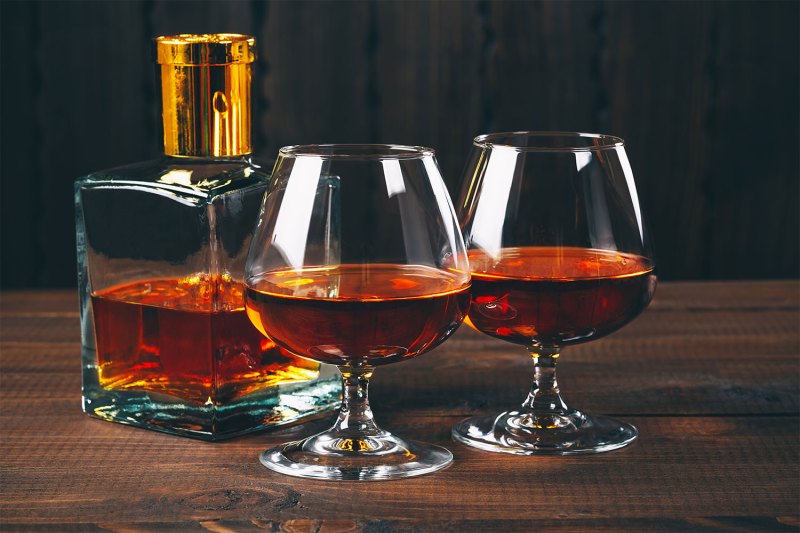Brandy has always sorta been wine’s less cool, geriatric uncle. You know, the one who talks too loud and only listens to Journey. And while the stereotype isn’t always out of touch, it’s an unfair generalization to call the spirit category dull and dusty.
In truth, there’s plenty of cool within the scope of brandy. As there should be, since the category of distilled wine is utterly massive. There are countless wines out there, let alone the multiplication that happens when you incorporate all of the many permutations and directions brandy can take said wine (and we’re not even getting into brandies made from other fruits). So, we’ll keep it simple and focus on the brandy’s so-called “big three.”

First, a bit of history. Brandy got its start as a way of preserving wine during the relatively slow-moving era of motor-less sea travel. In the 16th century, distillation became popular as a means of concentrating the liquid, which was taxed. Producers worked rather cleverly around the system by distilling wines with the intention of adding water back after the assessment.
These were the early days of distillation and soon, hobbyists became perfectionists. Details emerged about the many flavors that were left in the distillation tanks, not to mention the benefits of various types of aging and the many grape varietals producers were working with. Given the history of the merchant trade and the prominence of both European wine and its port cities, it’s unsurprising that the big three come from the countries of France and Portugal.
Cognac

Hailing from western France, Cognac refers to brandy made from typically from Ugni Blanc, aka the Saint-Emillion grape. By law, it’s distilled twice in copper and aged a minimum of two years in the barrel. The oak barrels are made from wood harvested in the Limousin or Tronçais regions. The white grapes are pressed and the juice is fermented before being distilled and ultimately put to barrel. Blending comes next and is a big deal, with major Cognac estates all having their own in-house master taster (or, maître de chai).
Single-vineyard brandy is quite common in France, often the product of several vintages of brandy all from the same grape-growing site. There are various levels, like V.S. (or, “very special,” meaning the youngest brandy has been aged at least two years) and XO (“extra old” meaning the youngest brandy in the blend is at least a decade old). Some of the more visible cognac brands include Courvoisier, Hennessy, and Rémy Martin. One worth looking for is the Lafayette VSOP from H. Mounier, a tasty and layered option. Read more in-depth about cognac here.
Armagnac

Armagnac comes from a bit father south in France in Gascony. It too can include the Ugni Blanc grape, along with varieties like Colombard, Folle Blanche, and more. Here, the distillation usually occurs just once and in column stills as opposed to the pot stills used in cognac. Armagnac has always been overshadowed by
Initially lauded for its therapeutic plusses, the brandy type eventually became popular among merchants, especially the Dutch. Set in the stunning foothills of the Pyrenees, the Armagnac region gained official national status in 1936. Fans of the brandy say it’s more lively and aromatic than cognac, benefiting from just a single round of distillation. It has a relatively low ABV, spirits-wise, and is usually a little rougher around the edges than its more famous sibling. For a good intro, try the Marie Duffau Hors d’Age, a bold but balanced expression.
Lourinhã

The least known of the big three, Lourinhã is Portuguese, set in and around the port city of Lisbon. A warmer region overlooking the ocean, it’s also known for its wealth of paleontological findings. It’s mostly crafted from fairly neutral white grapes, such as Alicante and Marquinhas. It’s distilled and often cut with water, sometimes reflecting the nearby ocean with a slight bit of salinity. A pretty amber color, locals like the stuff as a straight sipper or with a nib of dark chocolate. Some of the work from Quinta do Rol ends up in the states and offers a nice glimpse of the category.


